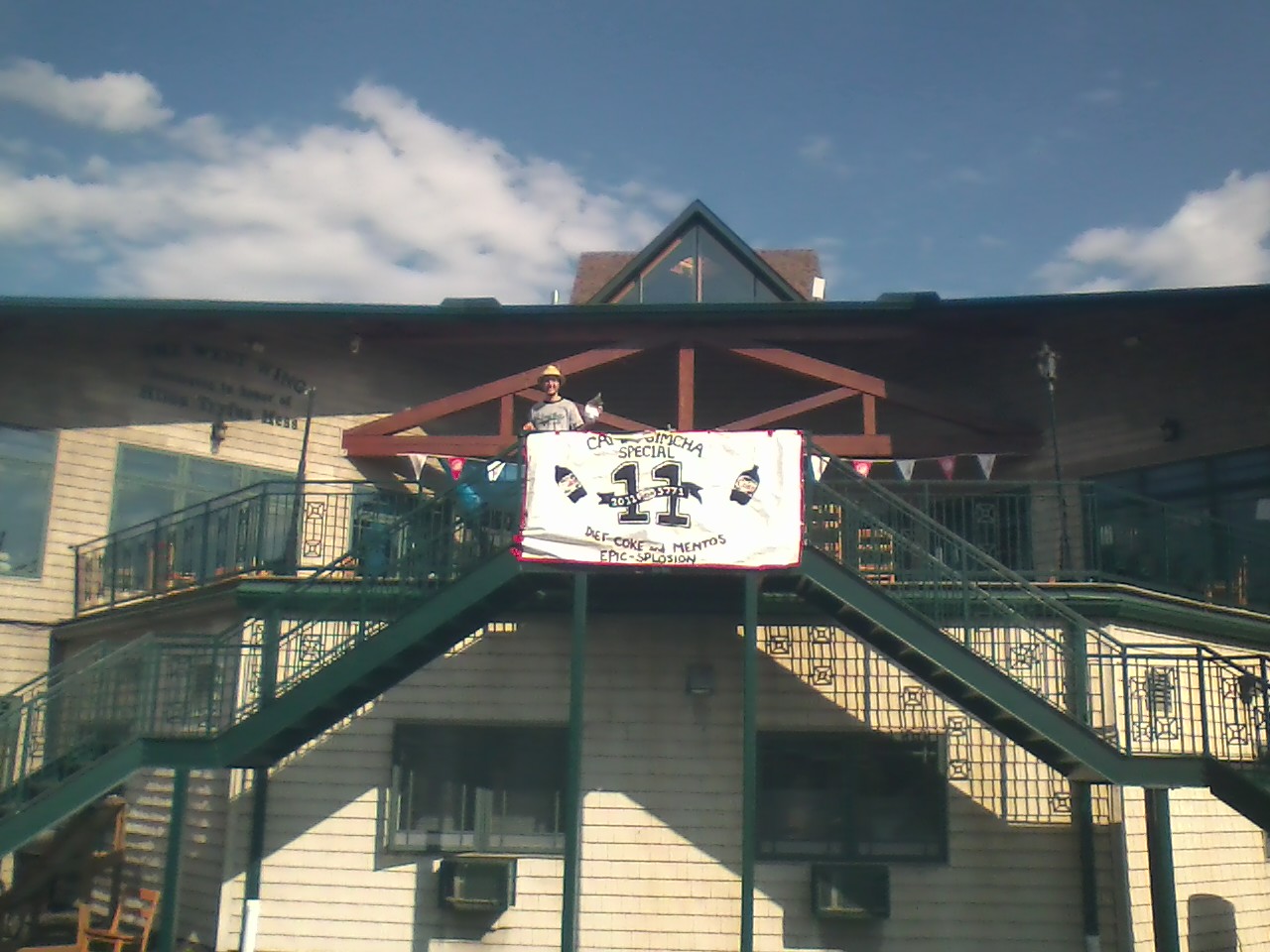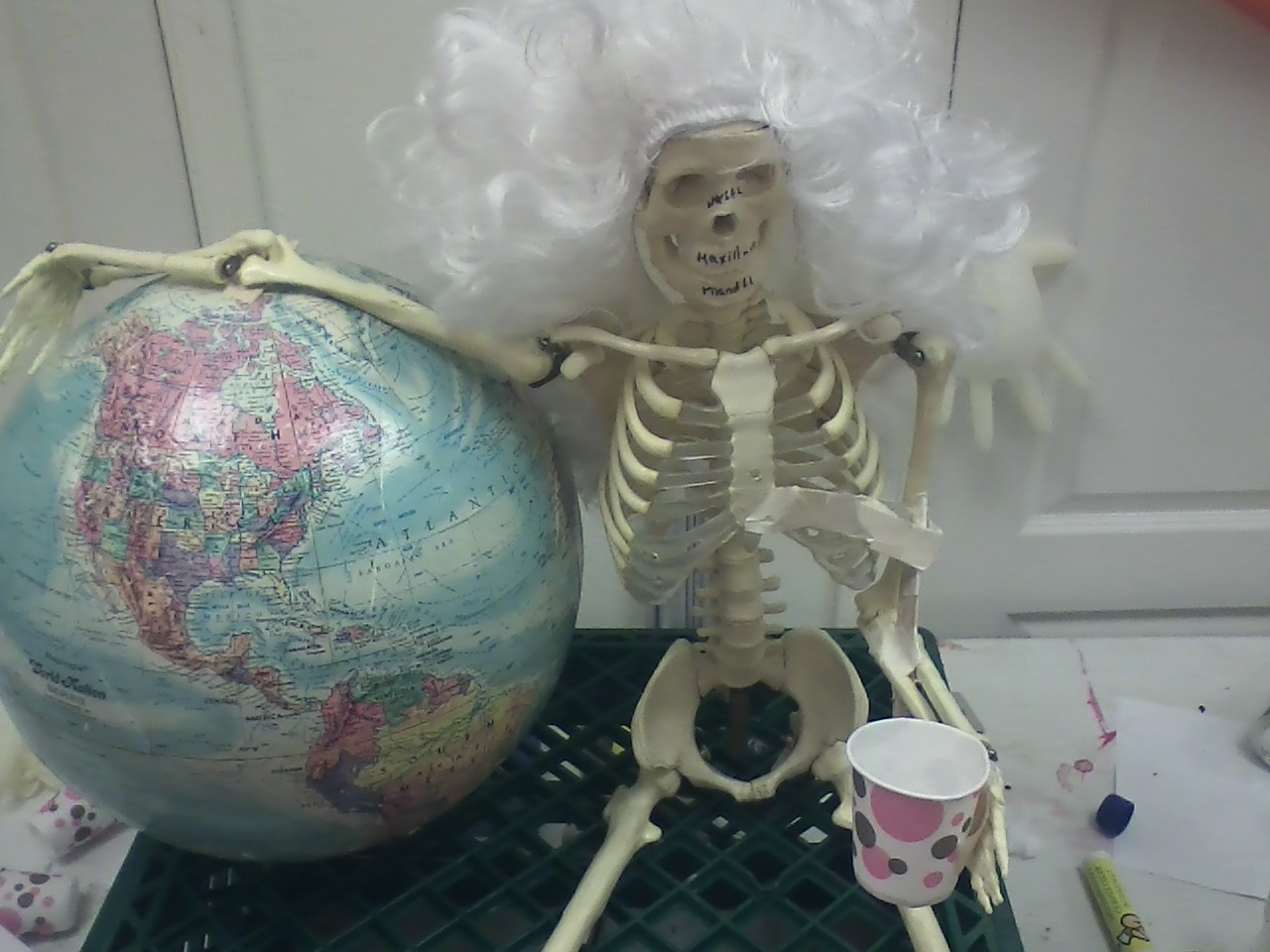Team:NYC Wetware/Human Practices
From 2011.igem.org
(Difference between revisions)
| Line 19: | Line 19: | ||
| - | <h3> | + | <h3>Camp Simcha's NYC Wetware Science Lab Workshop</h3> |
<br/> | <br/> | ||
| - | + | Camp Simcha is a camp for children with physical challenges. In summer 2010 Yossi Steinberger joined the Camp Simcha staff as the instructor for an Origami Workshop. Based on the campers’ response to an ingenious analogy between origami and protein folding, Yossi realized that many campers would love to do some science at camp. Most of the workshops at camp are geared toward arts-and-crafts, but the campers comprise a rather brainy group, and were excited at the prospect of thinking and learning about the world. Yossi pitched the idea for a new science workshop to the camp directors - the Camp Simcha Science Laboratory. They responded enthusiastically. Over the course of the year, Yossi recruited friends to help think of exciting projects and even to run the new science workshop. Many people joined a collaborative Google doc, that quickly reached dizzying lenghs. The NYC iGEM Wetware team pooled its efforts to plan the final curriculum for the summer; Yossi and David joined the campers at Simcha to run the Laboratory, and they even recruited Yossi’s cousin Shlomo, an outsider who was inspired at the prospect of showing kids in need a great time through science.<br/> | |
<br/> | <br/> | ||
| - | + | The Camp Simcha Lab aimed to provide young scientist campers with interesting projects and activities, and especially with sound scientific explanations. But a major goal of the Lab was to engage the scientific imaginations of all the campers through a series of fun and enlightening experiments. Some of our experiments appealed only to the particularly science-inclined campers, but we made sure there was something for everybody - who doesn’t enjoy Coke-and-Mentos explosions or an egg drop competition (we did both).<br/> | |
| - | + | ||
| - | + | ||
<br/> | <br/> | ||
| - | < | + | As first attempts go, we consider our Simcha Lab a success. See our blog <a href="http://campsimchalab.blogspot.com">Camp Simcha Laboratory</a> to learn about many of our exciting activities. Whether the campers were figuring out that they could use a plasma globe together with current-conducting play-dough and LEDs to create a mesmerizing circuit of flashing lights, or going bird-watching, bird whistles in hand, all the great moments amounted to an exciting first run for the Science Laboratory. We also passed the biggest test of success: The camp invited us back for the second session! Unfortunately the NYC iGEMers needed to return to the Cornell lab, but Shlomo stayed on, and is being assisted by two great staff volunteers. Going in we knew there would be an avalanche of interest in science. Thankfully, we had a great group running the workshop and dozen of projects, product of much scheming back home.<br/> |
| - | + | ||
<br/> | <br/> | ||
| - | + | So much scientific research is being done to discover new therapies for children and adults suffering from disease. We were glad to be able to use laboratory science itself as a therapy for these children and young adults. We were so pleased that the campers really seized the opportunity to think scientifically and have a great deal of much-needed fun.<br/> | |
| - | + | <br/> | |
| - | + | In future sessions of the Science Lab, we plan to increase the number of projects on hand, because, unfortunately, for the trial-run our supply far outstripped the demand. All the projects deserved more thorough explanations for all demonstrations and activities. Kids choosing projects before camp begins would enable us to individualize each campers experience. Together, improvements like these assure our workshop accelerates in excitement from the great trial-run. Because of the campers’ burgeoning interest, the Science Lab will ultimately become a smash-hit for the ages. | |
| - | + | ||
| - | + | ||
| - | + | ||
| - | + | ||
| - | + | ||
| - | + | ||
| - | + | ||
| - | + | ||
| - | + | ||
| - | + | ||
| - | <br/> | + | |
| - | + | ||
| - | + | ||
| - | + | ||
| - | + | ||
| - | + | ||
| - | + | ||
| - | + | ||
| - | + | ||
| - | + | ||
| - | + | ||
| - | + | ||
| - | + | ||
| - | + | ||
| - | + | ||
| - | + | ||
| - | + | ||
| - | + | ||
| - | + | ||
| - | + | ||
| - | + | ||
| - | + | ||
| - | + | ||
| - | + | ||
<br/> | <br/> | ||
| + | <img src="images/9/93/Css1.jpg" alt="oy" width="250" height="150"/> | ||
| + | <img src="images/d/d9/Css2.jpg" alt="oy" width="250" height="150"/> | ||
Latest revision as of 17:46, 8 September 2011

Camp Simcha's NYC Wetware Science Lab Workshop
Camp Simcha is a camp for children with physical challenges. In summer 2010 Yossi Steinberger joined the Camp Simcha staff as the instructor for an Origami Workshop. Based on the campers’ response to an ingenious analogy between origami and protein folding, Yossi realized that many campers would love to do some science at camp. Most of the workshops at camp are geared toward arts-and-crafts, but the campers comprise a rather brainy group, and were excited at the prospect of thinking and learning about the world. Yossi pitched the idea for a new science workshop to the camp directors - the Camp Simcha Science Laboratory. They responded enthusiastically. Over the course of the year, Yossi recruited friends to help think of exciting projects and even to run the new science workshop. Many people joined a collaborative Google doc, that quickly reached dizzying lenghs. The NYC iGEM Wetware team pooled its efforts to plan the final curriculum for the summer; Yossi and David joined the campers at Simcha to run the Laboratory, and they even recruited Yossi’s cousin Shlomo, an outsider who was inspired at the prospect of showing kids in need a great time through science.
The Camp Simcha Lab aimed to provide young scientist campers with interesting projects and activities, and especially with sound scientific explanations. But a major goal of the Lab was to engage the scientific imaginations of all the campers through a series of fun and enlightening experiments. Some of our experiments appealed only to the particularly science-inclined campers, but we made sure there was something for everybody - who doesn’t enjoy Coke-and-Mentos explosions or an egg drop competition (we did both).
As first attempts go, we consider our Simcha Lab a success. See our blog Camp Simcha Laboratory to learn about many of our exciting activities. Whether the campers were figuring out that they could use a plasma globe together with current-conducting play-dough and LEDs to create a mesmerizing circuit of flashing lights, or going bird-watching, bird whistles in hand, all the great moments amounted to an exciting first run for the Science Laboratory. We also passed the biggest test of success: The camp invited us back for the second session! Unfortunately the NYC iGEMers needed to return to the Cornell lab, but Shlomo stayed on, and is being assisted by two great staff volunteers. Going in we knew there would be an avalanche of interest in science. Thankfully, we had a great group running the workshop and dozen of projects, product of much scheming back home.
So much scientific research is being done to discover new therapies for children and adults suffering from disease. We were glad to be able to use laboratory science itself as a therapy for these children and young adults. We were so pleased that the campers really seized the opportunity to think scientifically and have a great deal of much-needed fun.
In future sessions of the Science Lab, we plan to increase the number of projects on hand, because, unfortunately, for the trial-run our supply far outstripped the demand. All the projects deserved more thorough explanations for all demonstrations and activities. Kids choosing projects before camp begins would enable us to individualize each campers experience. Together, improvements like these assure our workshop accelerates in excitement from the great trial-run. Because of the campers’ burgeoning interest, the Science Lab will ultimately become a smash-hit for the ages.


 "
"